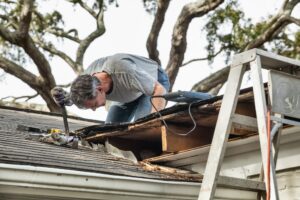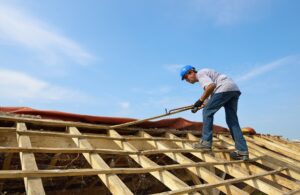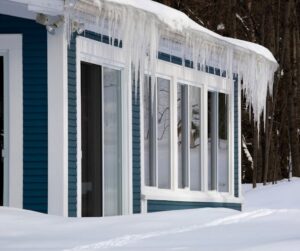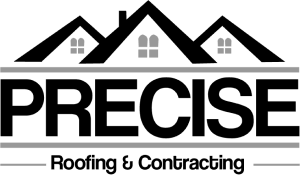As a homeowner, you’re the one responsible for ensuring your house is well-maintained. Well, one part of your house you should take special note of is your roof. It’s the cap for your house, and its failure would spell disaster for your home.
Luckily, you don’t have to climb onto the top of your roof to inspect it on your own. You can hire an inspector who’s trained to evaluate how your roof is functioning. You can schedule an inspection once a year, or you can save it for after a significant weather event. Here are some issues that an inspector will notice and can fix.
Shingle Failure
One of the biggest issues for a roof is when shingles start to fail. Asphalt shingles can last between 15 to 40 years. When they start to fail, though, they may curl up or buckle. They’ll also start to shed their granules. With metal roofs, the panels can become dented or even broken. Tiles shingles can also break.
Additionally, you may have storm damage you didn’t even know about. Perhaps the wind blew away small portions of your shingles. A hail storm can also break shingles or drum their granules off.
If the roof inspectors find any signs of shingle damage or failure, they’ll make recommendations. You can probably have just the affected portions replaced. However, if the damage is extensive enough, they may suggest a total roof replacement.
Roof Leaks
Another issue that damaged or missing shingles can cause is leaking. If the shingles are not able to do their job protecting the top of your house, moisture can find its way inside when it rains or when snow starts melting.
The roof inspectors will start with the external appearance of your roof. Next, they’ll move indoors. They’ll focus on areas directly below the roof, such as the attic. They’ll look at the ceiling and walls for signs of water damage. This damage can look like bubbling paint, discolored areas, wood or drywall rot, and mold.
Failing shingles aren’t the only source of roof leaks. They’ll also look at the soffits and fascia, plus the flashing around the chimney. The sooner you have the source of the roof leak fixed, the less chance water will have to damage your home.
Structural Problems
Many components go into a functioning roof. If any of the components develop an issue, the problem can become more widespread. For instance, if you have an issue with venting in your roof or attic, heat and moisture can build up under the roof. This buildup can lead to the formation of ice dams and a general reduction in the life of your roof.
The inspectors will be on the lookout for just such signs. They’ll check for uneven roof planes as well as signs that any part of your roof is sagging. They’ll also give your chimney a once-over and look for damage to the masonry and the chimney cap.
In some cases, you may face a large-scale repair if they find one of the above issues. However, the roof inspection will give you enough notice that you can plan for the repair.
Workmanship Issues
Sometimes the construction of the roof just wasn’t up to par. For instance, a contractor might have used the wrong kind of flashing around the chimney. As noted, if the flashing fails to prevent leaks, you’ll have water damage. Roof inspectors will also make note of any missing hardware, which includes the chimney cap.
The inspectors may even make suggestions for roof improvement. For instance, some homes have open eaves, which is an exposure of the beams right under the roof overhang. The roof inspector may recommend you have soffits installed, which are covers for those beams. The soffits can even be vented. Either way, they’ll protect the beams from weather-related damage.
Most of the above issues require relatively minor repairs. However, if you repair early, you’ll be less likely to need bigger repairs in the future.
Keep on top of your roof’s maintenance by having it inspected by a professional. Call Precise Roofing & Contracting for any of your roofing needs.





